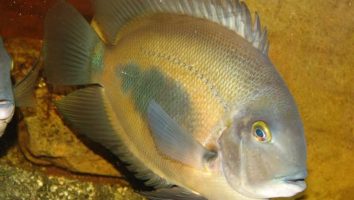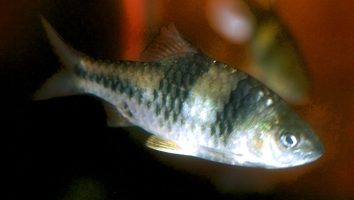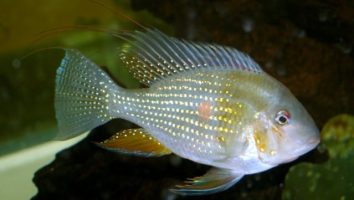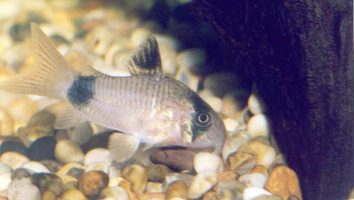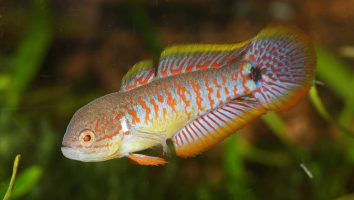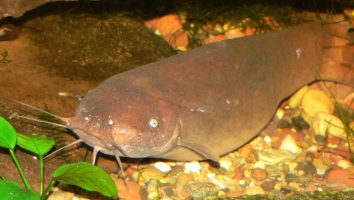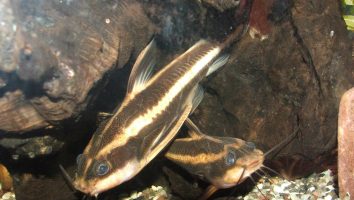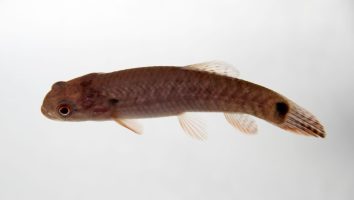Sailfin mollies are a beautiful and popular freshwater fish that make a great addition to any aquarium.
They’re relatively easy to care for and are very hardy, which makes them a good choice for beginner fishkeepers.
However, there are a few things you need to know about them before you add them to your tank. In this guide, we’ll teach you everything you need to know about sailfin molly care.
You’ll learn about their diet, tank mates, lifespan, and more!
Table of contents
Species overview
Sailfin mollies (Poecilia latipinna) are a type of fish that’s native to fresh and brackish waters in North and South America. They’re most commonly found in Florida, Mexico, and the Caribbean.
They prefer areas with plenty of vegetation, but they can also be found in open waters. Sailfin mollies are livebearers, which means they give birth to live young instead of laying eggs.
These fish are very popular in the aquarium trade due to their beauty and hardiness. They’re also relatively easy to care for, which makes them a good choice for beginner fishkeepers.
Sailfin mollies are peaceful fish, but they can be territorial toward their own species. They’re also known to be nippy, so they should be kept with fish that are too large to be seen as potential prey.
Appearance
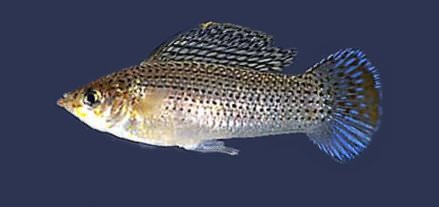
The first thing you’ll notice about this fish is their dorsal fin. It’s very tall, and it almost looks like a sail when they swim. This is where they get their name from.
The dorsal fin is tall and triangular, and it starts about two-thirds of the way back on their bodies.
The rest of their fins are also quite large. The anal fin is slightly shorter than the dorsal but it’s still quite tall. Their pectoral fins are large and triangular as well.
Both the dorsal and anal fins have a long ray that extends from the back. These rays are what give the fins their sail-like appearance.
The caudal fin is forked and symmetrical.
Sailfin mollies have a long and thin body that tapers down towards the tail. This shape gives them a lot of speed and agility in the water.
They’re a bit of a plain looking fish when it comes to coloration. They’re usually a light grey or silver color with a few dark spots on their body. The fins are usually a bit darker than the body.
Males tend to be more colorful than females and they also have longer fins.
Lifespan
The average lifespan of a sailfin molly is 3 to 5 years. However, it’s not uncommon for them to live up to 10 years if they’re well cared for.
Mollies are very hardy fish, but their lifespan can be impacted by a number of things. Poor water quality, for example, can shorten their lifespan significantly.
Proper diet and care is the best way to ensure your molly lives a long and healthy life.
Size
The sailfin molly is a relatively large fish, with adults reaching sizes of up to 4 inches in length.
Tank
Tank Size
The minimum tank size for Sailfin mollies is 20 gallons. This is assuming you’re keeping them in a school of at least 5 or 6 fish (which you should).
We personally recommend a slightly larger tank if you can accommodate it. Every extra space will make a big difference and allow you to keep a larger school or more tank mates if you’re interested in a community tank.
Water Parameters
Sailfin mollies are a tropical fish and need warm water to thrive. The water temperature should be between 75 and 82 degrees Fahrenheit.
The pH level should be between 7.5 and 8.5.
The water hardness should be between 10 and 30 dGH.
The alkalinity level should be between 4 and 8 dKH.
What To Put In Their Tank
Sailfin mollies are a great addition to any freshwater aquarium. They’re hardy, relatively peaceful, and add a splash of color to any tank.
When it comes to setting up the inside of their tank there are a few things you’ll want to keep in mind.
The first is that these fish like to swim around a lot. They’re not going to be content sitting in one spot all day long.
That means you’re going to need to provide them with plenty of open space to move around. If you have a smaller tank you might have to get creative with your decorations to make this work.
Another thing to keep in mind is that Sailfin mollies like to have a lot of plants in their tank. This provides them with somewhere to hide if they feel threatened and also gives them a place to graze on algae.
Some great plants to include in their tank are hornwort, water wisteria, and Java moss.
You’ll also want to make sure the substrate in their tank is soft. These fish are known to dig around a lot and a hard substrate can lead to cuts and scrapes.
Common Diseases
There are a few diseases that you’ll need to be aware of when keeping sailfin mollies. Luckily, they’re not too difficult to treat if you act quickly.
The most common disease that these fish experience is ich. This is a parasite that will attach itself to the skin of your fish and cause white spots to form.
If left untreated, ich can be fatal. However, it’s relatively easy to treat if you catch it early. There are a few different methods you can use, but the most common is to raise the temperature of the water.
This will cause the ich parasite to detach from the skin of your fish and eventually die.
Another disease to be aware of is fin rot. This is an infection that will eat away at the fins of your fish. It’s usually caused by poor water quality, but it can also be the result of an injury.
The most common symptom of fin rot is ragged or frayed fins. If you notice this, it’s important to act quickly. Fin rot is relatively easy to treat if it’s caught early, but it can be fatal if it’s left untreated.
The best way to prevent these diseases is to maintain clean and stable water conditions in your tank. This will go a long way in keeping your fish healthy and disease-free.
Behavior & Temperament
Sailfin mollies are peaceful fish that get along with most other aquarium inhabitants. They are not known to be aggressive towards other fish, and will usually only quarrel with each other if they feel threatened.
Sailfin mollies are active fish that enjoy swimming around and exploring their environment. They are curious by nature and will often approach new objects in their tank to investigate.
These fish are also known to be good jumpers, so it is important to have a tight-fitting lid on your aquarium to prevent them from escaping.
Sailfin mollies are social creatures that do best in groups. They will often form schools with other fish of their own kind and will become stressed if they are kept alone.
Tank Mates
Sailfin mollies are social creatures that do best in groups. In the wild, these fish live in schools of 20 or more individuals.
While you don’t need to have that many fish in your home aquarium, you should still aim for a group of at least six.
Not only will a group of sailfin mollies be happier, but they’ll also be less likely to harass other tank mates.
These fish are also livebearers, which means they give birth to live young. As a result, you need to be careful about who you pair them with.
Any fish that’s small enough to fit in a sailfin molly’s mouth is fair game. This includes other livebearers like guppies and platies.
Other good sailfin molly tank mates include:
- Swordtails
- Mollies
- Platies
- Guppies
- Endler’s Livebearers
- Black Molly
- Dalmatian Molly
- Lyretail Molly
Breeding
Sailfin mollies are fun fish to watch and pretty easy to breed. They’re livebearers, so they don’t lay eggs. The fry are born fully-formed and independent.
To start, you’ll need to set up a breeding tank. It should hold at least 20 gallons of water and have a lot of hiding places. Driftwood, live plants, and caves are all good options.
Then, you’ll need to fill the tank with Females. For every three females, add one male. This will help to ensure that each female gets plenty of attention.
After the fish have acclimated to their new home, you can begin feeding them. Give them a high-quality diet of live foods and flakes.
As the females begin to swell with fry, you’ll need to be on the lookout for aggression. Males can be pretty territorial when it comes to breeding. If you see any fights, separate the fish into different tanks.
When the females are ready to give birth, they’ll do it in the plants. The fry will be born fully-formed and independent. You can begin feeding them live foods and flakes right away.
Make sure to keep an eye on the fry. They’re very small and vulnerable to getting eaten by the adults. It’s a good idea to move them to a separate tank when they’re a few weeks old.
Conclusion
The Sailfin Molly is a great fish for beginners and experienced fish keepers alike. They’re beautiful fish that are relatively easy to care for as long as you provide them with the proper environment.
We hope this guide has helped you understand a little bit more about Sailfin Mollies and how to take care of them. If you have any further questions or would like to share your experiences with these fish, please reach out to us on social media or directly through our website. We love hearing from other fishkeepers and are always happy to help!

